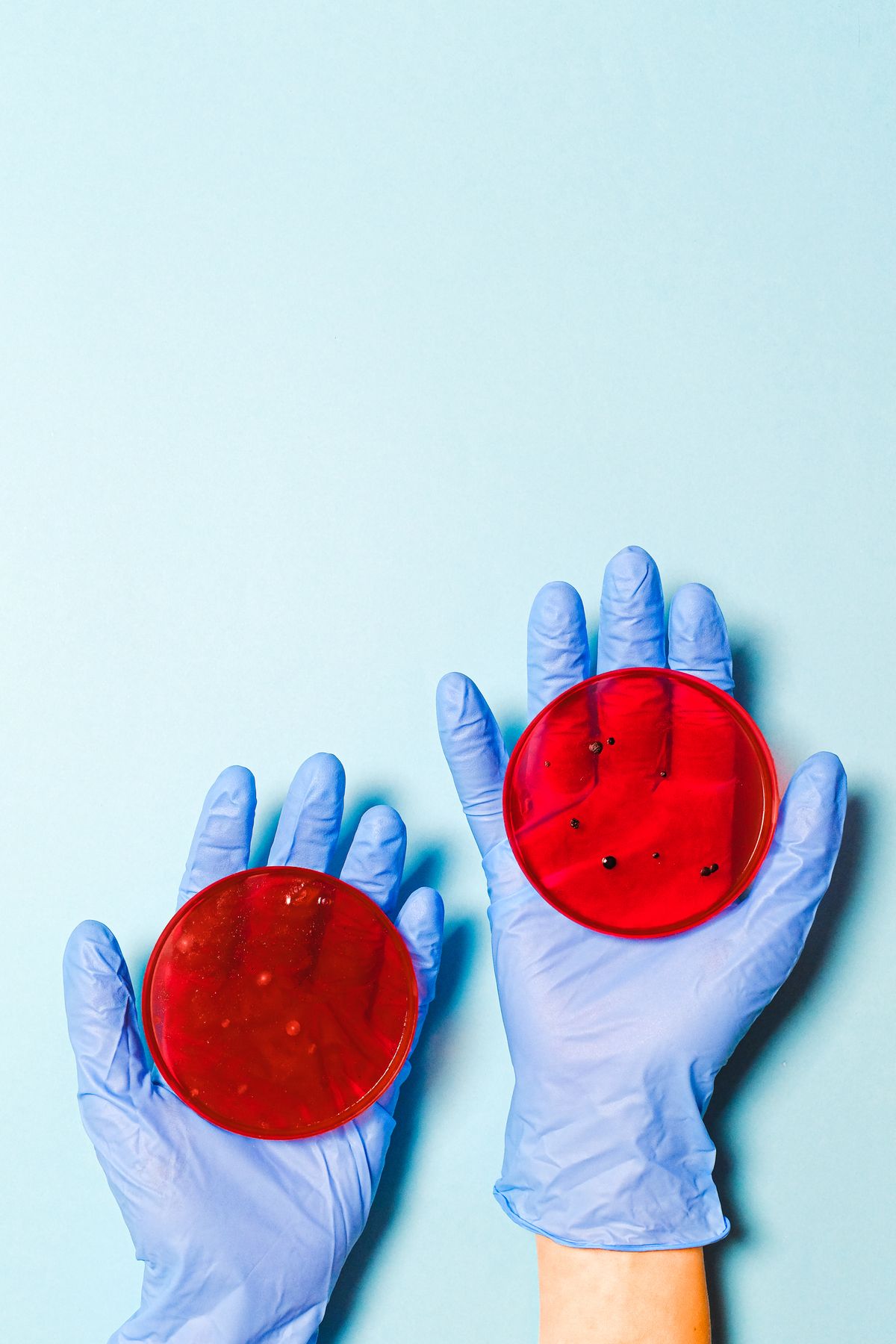Issue 15 Blue Crab Edition - How Dirty is Your Clinic? And What To Use to Detect Carpal Tunnel

Everything in Your Clinic is Covered in Germs. Just Some Are More Gross Than Others.
The Gist - This off-putting, but needed analysis from the Archives of PM&R details how bacteria-ridden a PT clinic is and where they’re hanging out. Got a biofilm on your balance boards? Probably. E. coli on your e-stim? Probably that too. Yikes. Since 5.5% of people in hospital rehabilitation services contract a nosocomial infection each year, this is worth looking into. Fortunately, the results weren’t terrible, just a bit icky.
The researchers swabbed items in 19 physical therapy centers, plated, and cultured them to see what kind of bacteria they could grow. Here are the highlights: Most treatment tables had some types of platable bacteria, but not a ton. The most contaminated items were ultrasound probes, estim electrodes, and the physical therapist’s hands. I couldn’t tell, but this data was likely taken before the pandemic, so things are probably a bit better now. But still, give things a quick scrub.
Tell Me More - On the positive side, there was a fairly very low incidence of bacteria that’s not endemic to the human body. Most of what the researchers found on the tables and hands of the PTs were the normal type of bacteria that colonize the external surfaces of the human body, though a few were the more hazardous staphylocci and other ugly bugs. Past studies had found more hazardous bacteria, so still keep an eye out. Most of this is unremarkable, but it does show how easily bacteria slip around a PT clinic. From hands to tables, to bodies, and onto PT equipment. The equipment was what really carried bacteria, scooping it up throughout the day.
Notably, the researchers did not test for viruses, so it’s possible that many more harmful contaminants were lurking clinics. On the whole, the researchers surmise that in clinic transmission would most likely come from equipment, not clinical staff. So give it a scrub and throw out the squishy stuff.
Paper? This fantastically open access paper is right here.
How to Diagnose Carpal Tunnel Syndrome
The Gist - This systematic review dug into the diagnostic test accuracy of different carpal tunnel scales, questionnaires, and hand symptom diagrams to see which could reliably identify carpal tunnel. There’s no gold standard for it, and nerve conduction studies aren’t super reliable and can be super painful (trust me, I just had one), so a combination of factors is usually used to diagnose. Here’s how they measure up:
The top performers were the CTS-6, the Kamath and Stothard Questionnaire, and the Katz and Stirrat Hand Symptoms Diagram. Across the studies checked, CTS-6’s positive likelihood ratio ranged from 2.2 to 10.5, the KSQ from 2 to 6.7, and the KSD from 2.1 to 3.55. The authors recommend a combination of these tests to get the best possible information about carpal tunnel.
Tell Me More - According to the authors, the studies had moderate to high risk of bias and moderate concerns regarding applicability, so they’re not perfect, but there is some good data here. Some scales weren’t able to be summarized as they were barely used in the research that the authors found. They put out a general call for more research into this area (as basically all systematic reviews do). A couple of methods were able to be thrown out for now as well, including the Lo Carpal Tunnel Prediction Rule and the Wainner Clinical Prediction Rule. The authors found that there’s not enough data to justify their use.
Remember that these likelihood ratios are only good if there is an established pre-test probability for them to shift. Many of the assessed studies did not establish this, leading to their lack of utility for the authors. Also, I’m taking this chance to once again advertise the DiTA, the Diagnostic Test Accuracy Database put together by PEDro last year. It’s exceptional and holds this data and much much more, so give it a look anytime you need information about diagnostic tests. It’s fantastic.
Can I have that paper? It’s right here.
